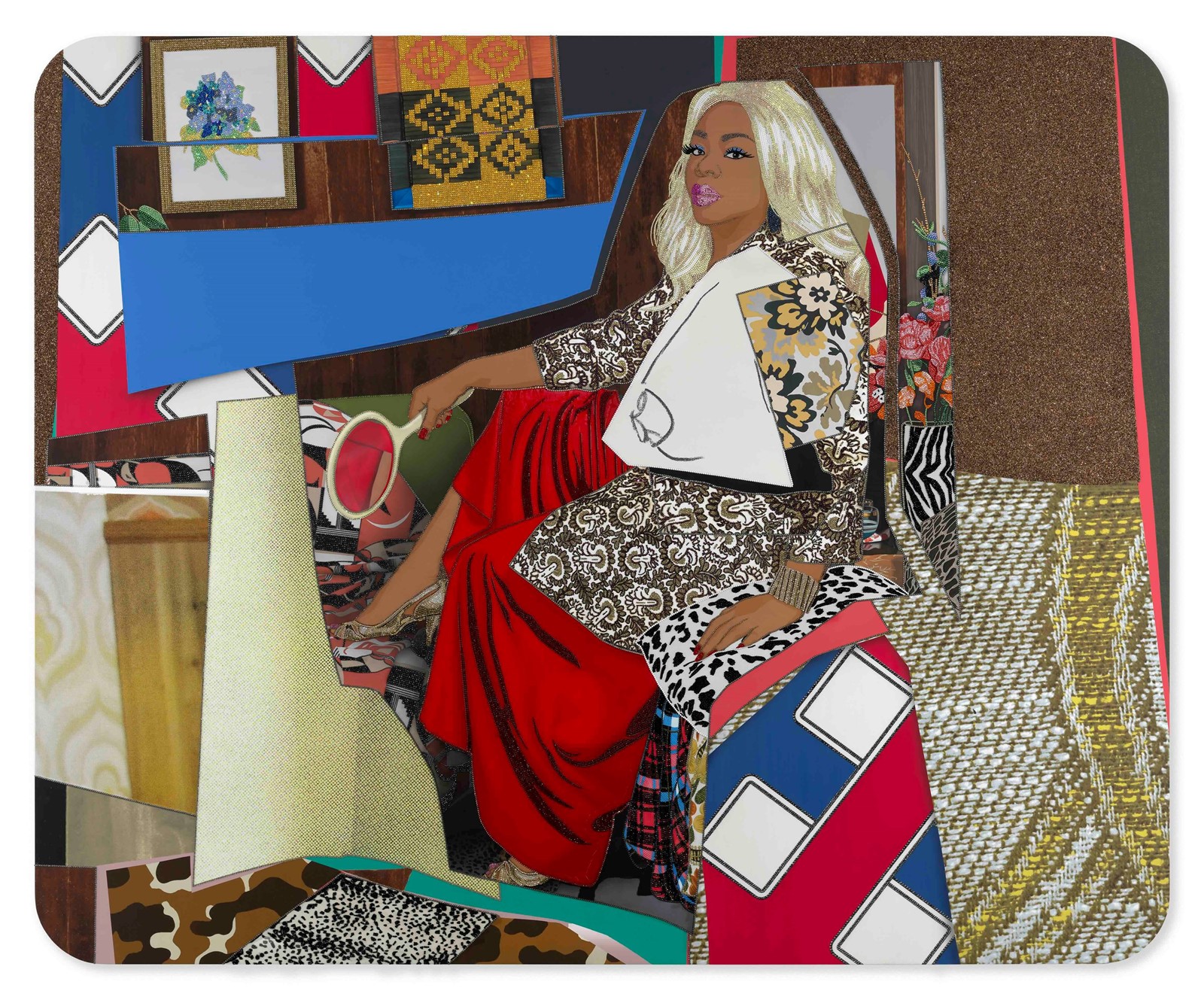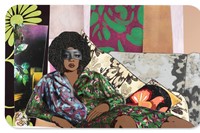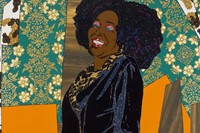Art historian, curator and writer Alayo Akinkugbe is behind the popular Instagram page A Black History of Art, which highlights overlooked Black artists, sitters, curators and thinkers, past and present. In a column for AnOthermag.com titled Black Gazes, Akinkugbe examines a spectrum of Black perspectives from across artistic disciplines and throughout art history, asking: how do Black artists see and respond to the world around them?
Mickalene Thomas is the celebrated New York-based artist best known for her grand, dazzling multimedia portraits of Black women that exude glamour and intimacy. Her latest solo exhibition at the Hayward Gallery, All About Love, presents work from the past two decades of her career – a testament to a practice she describes as “rooted in love”.
The exhibition is a true spectacle, bringing together film, installation, large-scale paintings, and collages. One installation transforms the space into a 1970s-inspired living room – pulled from her mother’s Polaroids – while another area is adorned with plush carpets and wood panelling.
In the following conversation, Thomas speaks about the profound influence of her mother – her first muse – her enduring love for collage, and why she’s turning her lens toward men for the first time, following her recent portraits for Another Man.
Alayo Akinkugbe: The title of your new exhibition, All About Love, pays homage to bell hooks and her widely lauded philosophy on love. Why did it feel apt?
Mickalene Thomas: This title felt apt for personal and professional reasons. I was going through a lot in my personal life with a separation while deciding on works for this show. I started really thinking about the women who I was painting and who I worked with in collaboration, the sitters and muses for the work.
From reading some of the chapters in the book (All About Love), I realised my work is rooted in the space of love: self-love but also love for Black women. Beauty, desire, glamour and all of these notions that I am pulling from have really led me to discover that the root of my work is love, starting with my mother.
AA: Were you close to your mother?
MT: My art was built out of forming a relationship with my mother. We were very close, and then there was [a period of] estrangement. Not because she was against my choices; I think I just didn’t know how to express myself and feared I wasn’t going to be accepted. Our relationship re-developed strongly out of love, for really wanting to know who she was as a person and to be closer to her.
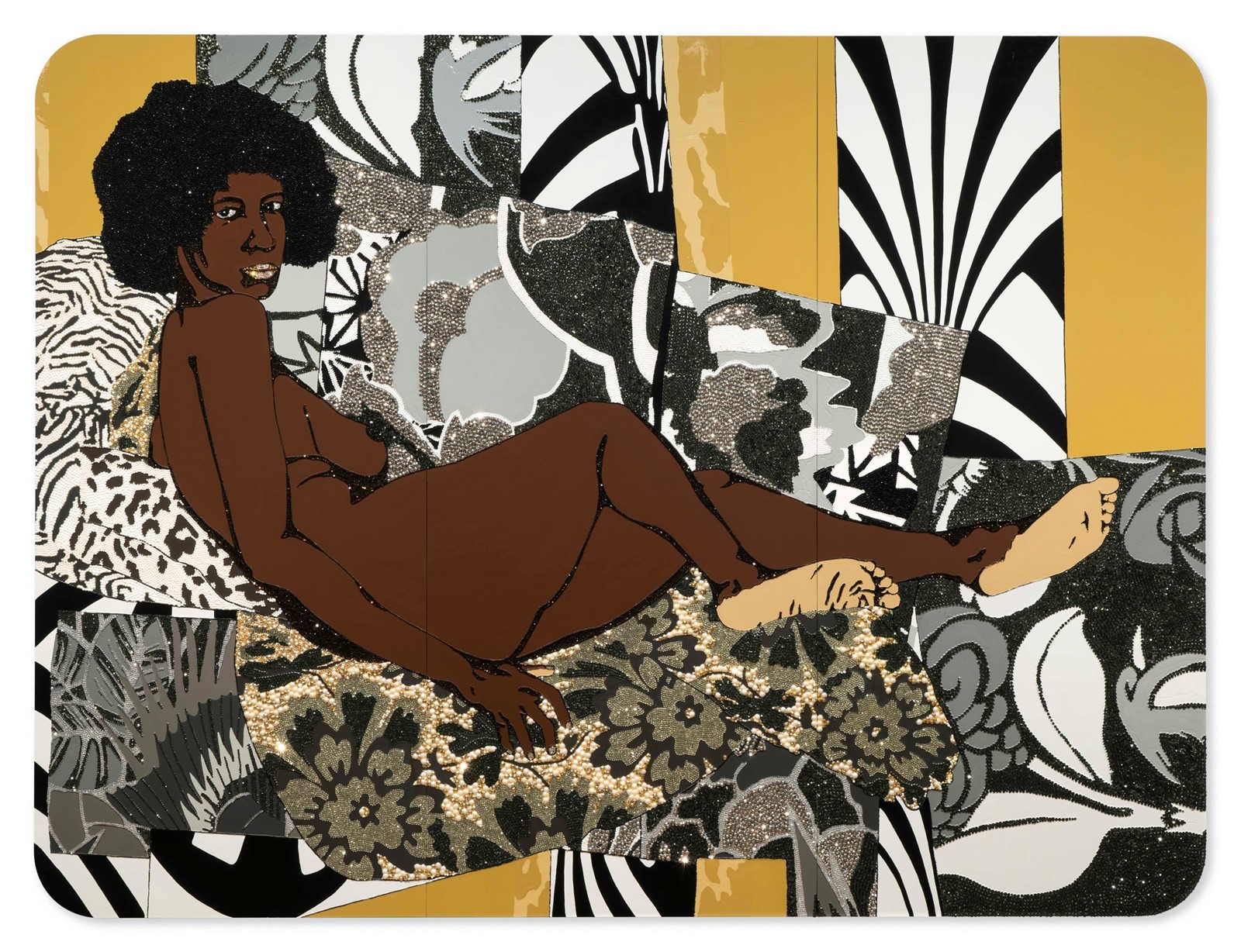
AA: Was she something of a muse to you?
MT: She was a huge muse – she was the first person I photographed. She was the first to give me the agency and permission to work with her in a very intimate way. I was able to learn a lot about myself through looking at her and understanding her choices. What grew out of that was an immense appreciation, gratitude and love for her, looking at her and understanding her. I began to separate myself as her daughter for the sake of really valuing who she was as a person.
AA: Your work spans painting, collage, photography and installation and you’ve often employed these media in tandem in a single work. Is there one medium which initially drew you to making art?
MT: I’ve always gravitated towards collage. When I was younger, I’d put things on the wall, tear pictures out of scenes, cut out some of the figures and shapes and arrange them on my wall. I’ve always played with images and I got back to that through painting. I was never really satisfied with it as a medium for my practice, and that’s why I started working with other materials.
“Beauty, desire, glamour and all of these notions that I am pulling from have really led me to discover that the root of my work is love, starting with my mother” – Mickalene Thomas
AA: All About Love looks back at 20 years of your practice. Is nostalgia a major element of the exhibition?
MT: Nostalgia is an important part of my practice. I’m always looking back into my life and memories and pulling from the past. For example, the living room installation is fully recontextualised from nostalgia. The Polaroids are my mother’s actual Polaroids, and the space is recontextualised. If you look at that closely, you’ll see the same couch, nightstands, and beer pulled out of those photographs.
I was really thinking about – since my mother is no longer here, and she was my muse – how to create a portrait when the person’s not here? Their physical self isn’t here, but elements of them remain, so you can still tell their story by using those elements. That’s where nostalgia plays a huge part.
AA: We spoke about the depiction of men in your work for the first time, for your Another Man cover story. Did that experience open up space for you to consider male muses in other projects?
MT: Yes, I’ve made more collages from that shoot, and I’m going to make some paintings of them. People have always asked, “When are you going to paint male models?” and I’ve always wanted to. I’m the only girl of all boys – I have four brothers – and [beginning to portray men in my work] warms my heart, because I’m really seeing and thinking about them in a different way.
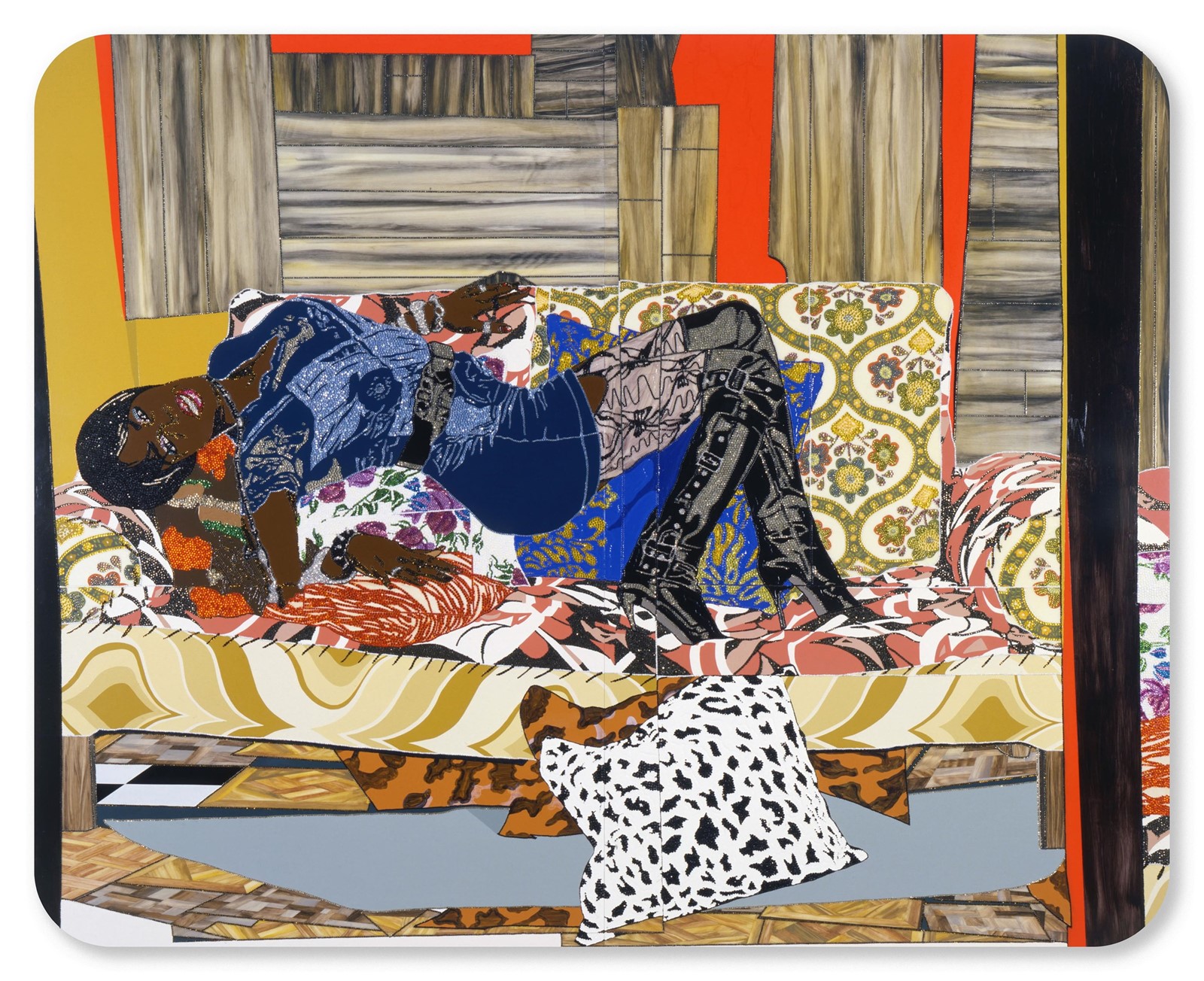
AA: Your work often references contemporary feminist literature. Aside from bell hooks, are there any other authors that have influenced or guided your practice?
MT: The Color Purple (1982) by Alice Walker made a [lasting] impression on me when I was growing up, so I use a lot of images of the characters from the film adaptation in my work. I’ve made a whole series around The Color Purple and the relationship between the two women, Shug and Celie. Of course Zora Neale Hurston, Toni Morrison and the great James Baldwin are influences. Also, art historians like Tina Campt, Sarah Elizabeth Lewis and Denise Murrell.
Sometimes you think your thoughts are just your own, and then you read something and you’re like, wow. It’s jumping off the page and it resonates with you in such a visceral way. I am influenced by writers that really have the passion, the advocacy, the brilliance of mind and the tenacity to just go into their craft ferociously, and create narratives and truths that support ideas. I think it’s important for artists to have their world full, and intersect with all of these different types of people. I love surrounding myself with writers and musicians; they inform my work in a major way.
All About Love by Mickalene Thomas is on show at the Hayward Gallery in London until 5 May 2025.
